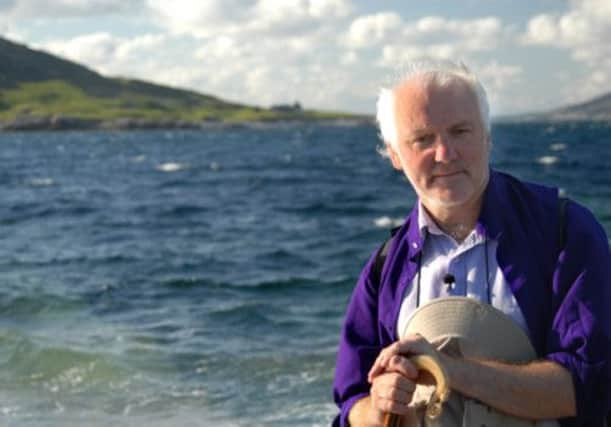Novel will come out in English, Gaelic on same day


Scotland will play host to a literary first later this month with the simultaneous publication of a novel in both English and Gaelic.
The novel, written by the Scottish writer and poet Angus Peter Campbell – Aonghas Phadraig Caimbeul in the Gaelic version – will be published by Luath Press in two separate editions, each with a different cover.
Advertisement
Hide AdIt is believed to be the first time an author has written a work of fiction in both languages at the same time, as well as the first time both an English and Gaelic version of a novel have been published on the same day.
Campbell, who in the past has written fiction in both languages, said the writing process had been unusual and intricate.
“I wrote them both simultaneously in the sense that I would write bits in one language then either do the same again – but differently – in the other language, or write a bit in one language then move on to write the next bit in the other language,” he said.
“Like a jigsaw or a zig-zag, one field of language would often then open up a surprising and unexpected gate into the other language. I think that in itself provided a dynamism which was very interesting.”
The novel tells the story of a young man and woman who pass each other on the stairs of a ferryboat as it sails through the Sound of Mull. Though they only brush against each other as they pass, neither of them have forgotten the moment, and almost 50 years later, they meet again.
Campbell, who is based on the Isle of Skye and last year saw his poetry collection Aibisidh named Scottish Poetry Book of the Year, said that writing simultaneously in two languages also presented unique difficulties.
Advertisement
Hide AdHe said that his biggest challenge was “making sure that nothing was a mere wooden translation from one language to the other.”
He added: “It’s extremely difficult to retain a sense of absolute authenticity. The effort and work was always not to deaden it.”
Advertisement
Hide AdGaelic fiction has become increasingly popular in recent years. Earlier this year saw the publication of the first science fiction novel in Gaelic, Air Cuan Dubh Drilseach by the American-born writer Tim Armstrong, who now lives on Skye and works at the Gaelic college Sabhal Mor Ostaig. Meanwhile, there was the publication in 2010 of a debut collection of stories by Alison Lang, a Gaelic learner who lives in Edinburgh, and who was shortlisted for the Saltire Society First Book of the Year award.
John Storey, head of literature and publishing at the Gaelic Book Council, said: “There has been a quiet revolution in Gaelic fiction over the last ten to 15 years.
“In addition to established authors such as Angus Peter, there is a new generation of Gaelic fiction writers coming through – both from native and learner backgrounds – producing exciting new work and exploring a range of diverse subjects, themes and writing styles.”
Storey said that the publication also showed the publishers were taking the medium of Gaelic fiction more seriously than in the past.
“This is a brave and positive step from Luath Press,” he said. “They have received no external funding for publishing the novel. Luath’s commitment reflects an increasing openness towards Gaelic fiction from mainstream publishers, and demonstrates the rising prominence of Gaelic fiction.”
Gavin MacDougall, director of Luath Press, said: “We had discussions in the past about doing something like this and this time we decided to just go ahead and do it. We might be foolish and mad but it seems to make sense and everyone we’ve spoken to has been delighted that we’re doing it.”
Advertisement
Hide AdCampbell, who also works as an actor and recently finished filming the Katie Morag series in Lewis for CBeebies, based on the children’s books by Mairi Hedderwick, said that he hoped the book would be used as a learning tool by those studying Gaelic.
“If you’re fluent in Gaelic and English I think as a reader you would find it quite interesting to read both, and hopefully for Gaelic learners it will be very useful to be able to read from both one and the other.
Advertisement
Hide AdBut he added: “There are pitfalls however, literal lines where one does not bear resemblance to another in the different languages.”
Campbell said that he hoped the publication would be seen positively. “As Gaels we are all now totally bilingual, and that should be considered as a tremendous advantage. It gives us an extra dimension through which to view the world and also gives us a wider choice as to how to express ourselves,” he said.
“That freedom of choice seems to me to be the norm in most parts of the world, though at times it seems as if bilingualism is seen as some kind of fetter or narrow hindrance here.”